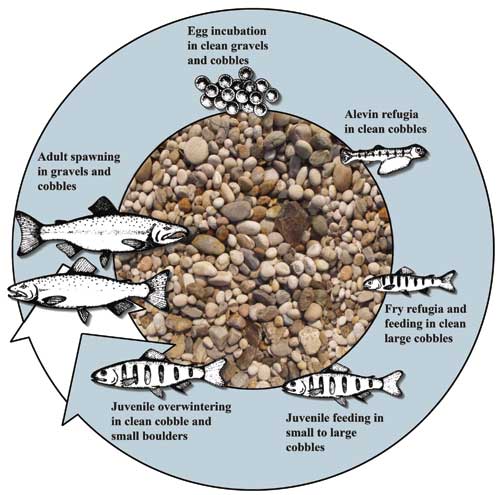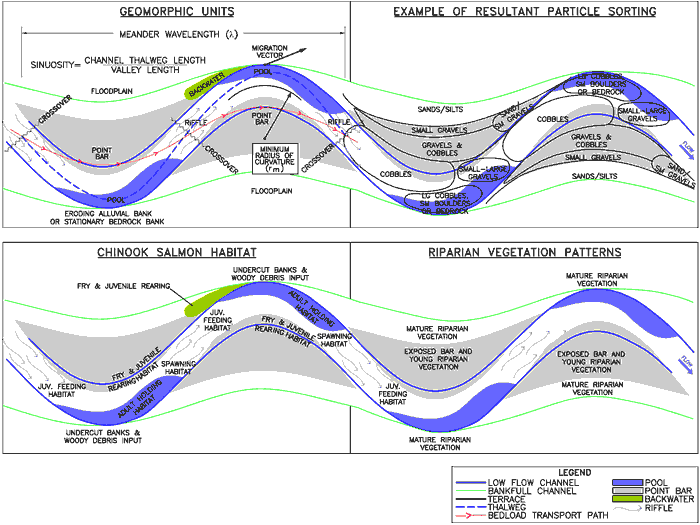TRINITY RIVER RESTORATION PROGRAM
COARSE SEDIMENT MANAGEMENT PLAN, Part 2
Foundation
The Trinity River Mainstem Fishery Restoration Record of Decision (ROD), signed by the Secretary of the Interior in 2000, attempts to reverse impacts to the river below Lewiston Dam using high flow releases from Trinity and Lewiston dams, coarse sediment management, fine sediment management, and channel rehabilitation. The Trinity River Flow Evaluation Final Report (TRFEFR) and ROD provided recommendations for coarse sediment management. Significant work to better understand sediment transport dynamics on the Trinity River has occurred since these recommendations were developed for the TRFEFR, and thus, the Coarse Sediment Management Plan (CSMP) adds considerably more detail to the initial TRFEFR recommendations. Consistent with the TRFEFR and ROD, the CSMP adopts the strategy of restoring and maintaining fish habitat by restoring fluvial geomorphic processes. To accomplish this, the CSMP must: (1) replace a portion of the upstream coarse sediment sources lost by the dam by introducing coarse sediment below Lewiston Dam, and (2) place introduced coarse sediment sizes and volumes in proportion to the ROD high flows to transport, deposit, and shape these introduced coarse sediments into diverse and complex fish habitat.
 |
General habitats provided by coarse sediments
for fall-run Chinook salmon life-stages.
Impacts to the Fishery
Salmon, steelhead and other aquatic and terrestrial species on the Trinity River depend on channel complexity to develop channel shape, flow patterns, and vegetation for their health and production. An improved high flow regime and coarse sediment supply encourages diverse bars to form, which in turn creates complex habitat such as pools, riffles, alcoves, side channels, and young riparian vegetation, used by salmonids during their various life stages. Coarse sediment is not only important for spawning habitat, but is also important for creating fry and juvenile rearing habitat, identified in the TRFEFR as the current factor limiting salmon production from the Trinity River.
|





